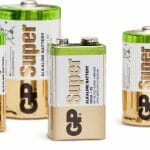According to Euromonitor, stand-up pouches are among the fastest growing packaging formats and will continue on their growth trajectory up to 2017. Their versatility allows them to convey both portability and quality and shelf-stand out in snack products.
Whilst the shapely forms of doy-style packs, block-bottom bags and quad packs add aesthetic appeal, they are causing headaches for the coding operation.
A decade ago, snacks were rarely packed in anything other than vertically formed, filled and sealed pillow packs. This made life very easy from a coding perspective; a thermal transfer printer could simply be mounted onto the bagger to code the roll stock before it was formed.
Some of the more structured pouch designs are not so easy to produce on a form, fill, seal machine, so for small to medium volumes, many snack producers are buying in pre-made pouches. The downside of this is that a thermal transfer printer cannot easily be employed to print on the formed pack. There is not always an opportunity to code the pouch online before it is filled and thermal transfer printers struggle to print on anything other than flat film.
Continuous Inkjet (CIJ) is therefore a more common technology for this application. But whilst CIJ is ideal for printing small amounts of information, such as use by dates, snack producers are increasingly looking to overprint large amounts of information. Overprinting information such as product names, nutritional information and ingredient lists allows them to limit their stock of pre-printed packaging film, as the same pack can be used for different SKUs and geographical markets.
In this scenario, thermal transfer is really the only technology that is capable of wide format, on-demand printing of fine text.
Taking coding offline
One solution to these problems is to take coding offline. By coding pouches off-line before they are filled, they can be brought to the production line ready printed. This has considerable advantages for code quality as coding the pouch in its flat form results in a consistently clear, perfectly positioned code. Furthermore, where an online coder is struggling and creating a bottleneck, removing the process from the critical path can deliver efficiency improvements.
To this end, Rotech has developed the RF1-V, a standalone vacuum feed overprinting system that has been engineered specifically for pouches, bags and other otherwise awkward to feed products. By using a thermal printer with a print width of up to 128mm and printing continuously, a very large print area of almost any length can be accommodated.
Many pouches are equipped with closures such as zippers and resealable labels. Whilst this adds consumer appeal, it can present problems to offline coders, as it can create variations in the pouch thickness of as much as 0.5cm in places. Most offline coders use friction feeding, which is designed to feed packs or pouches of a uniform thickness. The material to be coded is passed between a roller and a rubber friction insert. The gap between the two components is set according to the thickness of the material. Widening the gap to accommodate a resealing mechanism may result in inaccurate feeding.
The RF1 assuages this issue by using vacuum pick and place technology to pick a pouch from a stack, place it onto a conveyor for printing, and place the printed pouch neatly onto another stack for collection, at speeds of around 40 pouches per minute.
Snack companies worldwide are already using the RF1 to print pouches that are to be filled with anything from beef jerky snacks to dried fruit and nut mixes.








Leave a Reply